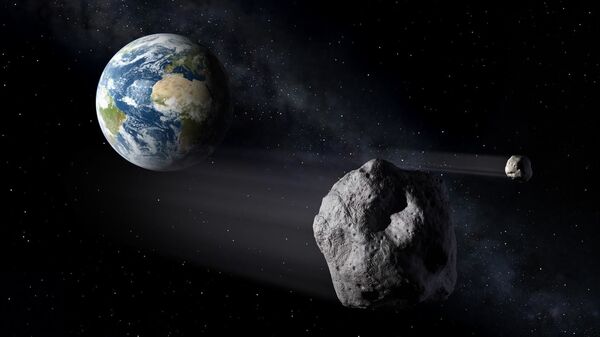The night sky will be far from tranquil this Christmas day as a large asteroid is expected to sweep past the Earth at a speed of 10 km/s.
The rock, dubbed 2014 SD224, was discovered back in September 2014, and immediately classified as an Aten asteroid, meaning its orbit crosses that of our planet. Also known as 501647, the asteroid is officially measured somewhere between 92 and 210 metres in diameter based on the way it reflects light, but scientists believe that its actual size is about 150 metres.
NASA’s Center for Near Earth Object Studies now estimates that 2014 SD224 will come closest to our planet exactly on the night of 25 December. Earthlings should not worry too much though, as the rock is expected to “safely” pass by us at a distance of 0.02 astronomical units, or 3 million km. For the space agency, all close approaches like that are still considered “potentially hazardous” because of significant regional damage they have a chance of creating.
The forthcoming visitors may still not be as spectacular as the Geminid meteor shower which is expected to be visible on the night of 13 December. The usually luminous event is known for producing bright fireballs and some breath-taking sights, so viewers should be careful not to miss one of the most miraculous nights of 2020.



